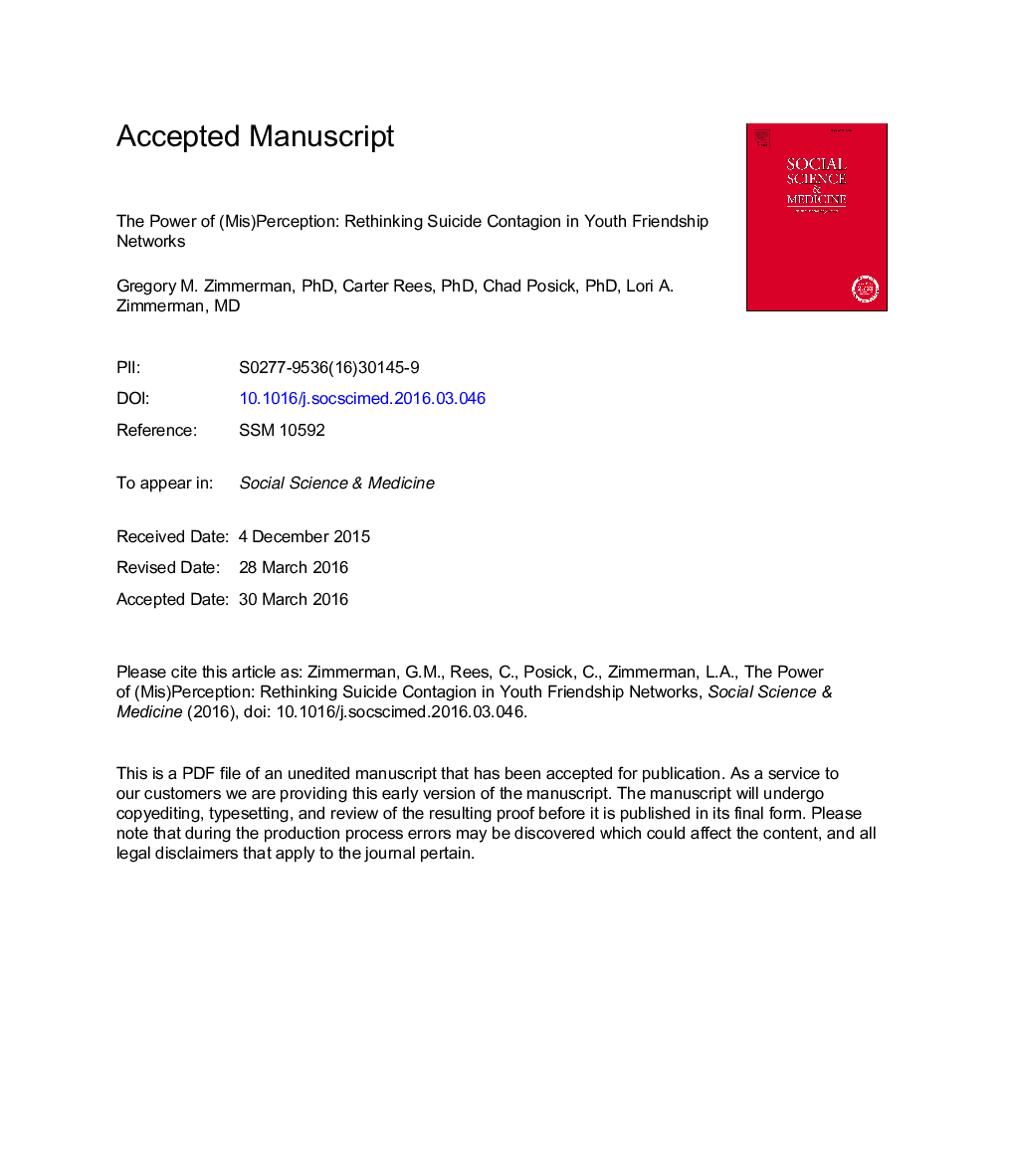| Article ID | Journal | Published Year | Pages | File Type |
|---|---|---|---|---|
| 7330117 | Social Science & Medicine | 2016 | 36 Pages |
Abstract
Suicide is a leading cause of death among youth. In the wake of peer suicide, youth are vulnerable to suicide contagion. But, questions remain about the mechanisms through which suicide spreads and the accuracy of youths' estimates of friends' suicidal behaviors. This study addresses these questions within school-aged youths' friendship networks. Social network data were drawn from two schools in the National Longitudinal Study of Adolescent to Adult Health, from which 2180 youth in grades 7-12 nominated up to ten friends. A measure of “perceived” friends' attempted suicide was constructed based on respondents' reports of their friends' attempted suicide. This measure was broader than a “true” measure of friends' attempted suicide, constructed from self-reports of nominated friends who attended respondents' schools. Sociograms graphically represented the accuracy with which suicide attempters estimated friends' suicide attempts. Results from cross-tabulation with Chi-square analysis indicated that approximately 4% of youth (88/2180) attempted suicide, and these youth disproportionately misperceived (predominantly overestimated) friends' suicidal behaviors, compared to non-suicide-attempters. Penalized logistic regression models indicated that friends' self-reported attempted suicide was unrelated to respondent attempted suicide. But, the odds of respondent attempted suicide were 2.54 times higher (95% CI, 1.06-6.10) among youth who accurately perceived friends' attempted suicide, and 5.40 times higher (95% CI, 3.34-8.77) among youth who overestimated friends' attempted suicide. The results suggest that at-risk youth overestimate their friends' suicidal behaviors, which exacerbates their own risk of suicidal behavior. Methodologically, this suggests that a continued collaboration among network scientists, suicide researchers, and medical providers is necessary to further examine the mechanisms surrounding this phenomenon. Practically, it is important to screen at-risk youth for exposure to peer suicide and to use the social environment created by adolescent friendship networks to empower and support youth who are susceptible to suicidal thoughts and behaviors.
Related Topics
Health Sciences
Medicine and Dentistry
Public Health and Health Policy
Authors
Gregory M. Zimmerman, Carter Rees, Chad Posick, Lori A. Zimmerman,
